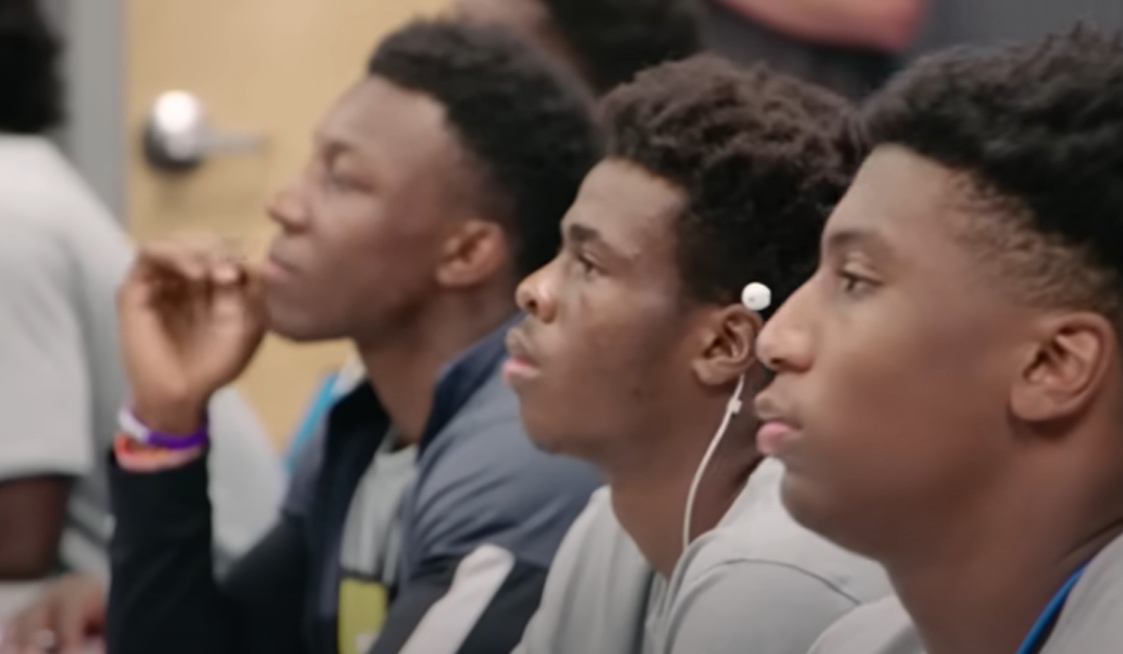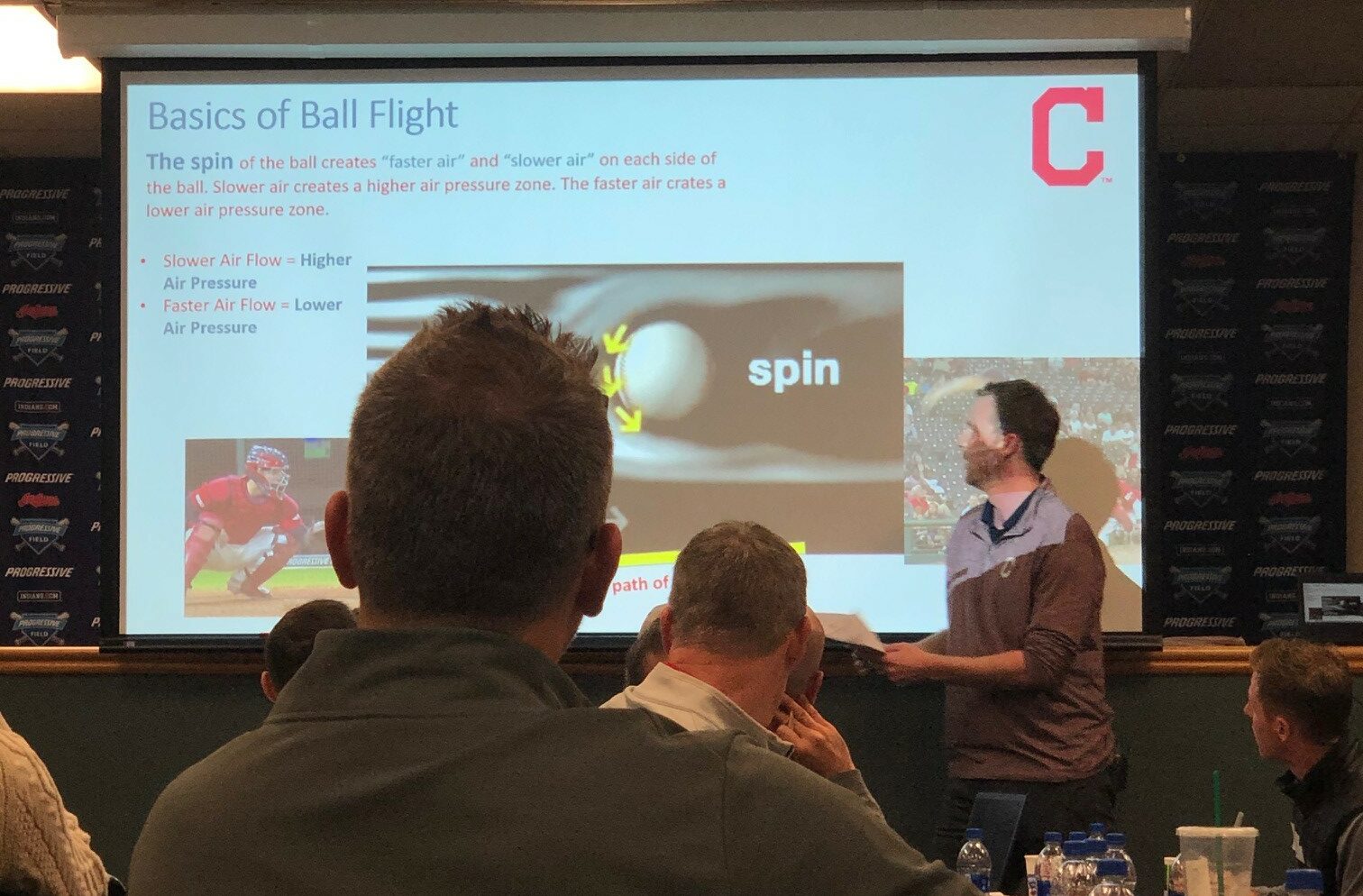THE CHALLENGE: How much engagement is the right amount?
THE IDEA:
Today is August 2, which means training camp is in full swing for the NFL and NCAA football programs, and all across the country coordinators, position coaches and player development personnel are doing their best to teach their players the offensive and defensive schemes their teams will run. I suspect the average fan would be surprised to learn how much time high-level amateur and professional football players spend learning in a classroom setting. That’s why so many coaches prioritize improving their abilities as a classroom teacher.
Of course, player meetings aren’t limited to just American football; in every sport there is a cognitive side to the game that needs to be learned and therefore explicitly and (ideally) expertly taught. In fact, in the last month I have been asked by three different coaches – one football, one baseball, and one basketball, about learner engagement during meetings. How much is the right amount? What should it look like? And even, what’s the point?
First let’s get the obvious out of the way: the answer to all these questions is, “it depends.” Like any complex question there is no cut and dry, one-size-fits-all answer. Let’s work through some thoughts on each question, taking them in reverse order.
What’s the point of engaging the learner? Incorporating carefully crafted engagements into a lesson is a way to ensure that the learners are thinking about what we are teaching. This matters because the more we think about something, the more likely we are to remember it. Our brains are forgetting machines. We forget the vast majority of what we experience on a daily basis because we have to; our brains are taking in so much sensory information every second that there is no way we could retain it all and still be able to pull the important information out when we need it most. And how does our brain know what to remember? It assumes that if information is important you will think about it, and therefore remembers what we think about the most. This is why cognitive psychologist Daniel Willingham says “memory is the residue of thought.”
So when we are teaching, we want our learners thinking about this new content and not what they’re going to have for lunch, whether their boyfriend is mad at them, or what that strange smell is. If all we are asking of the learners is that they sit quietly and let the wisdom of their coach wash over them, then it is likely that some percentage of them will not be locked in, and not thinking about the right stuff. Contrast that with a classroom where learners know they could be asked a question at any time, or they could be asked to turn to their neighbor and share their opinion; in this latter setting it is less likely the learner’s mind will wander, and more likely they are storing the right information in memory.
What should engagement look like? There are many different ways we can create dynamic and engaging learning environments in a classroom setting. We’ve already touched on some above: answering questions, turning and talking to a neighbor, and explaining their thinking. You can also have learners demonstrate technique, visualize, interpret a graph or chart… and so on.
More critical than what type of engagement we choose, is that we are spending time engaging on the right content, to the right extent. I recommend anchoring engagements on the most important information to retain. No need to spend a lot of time thinking about minutiae or trivial facts – if we only are going to fire a few engagement bullets, let’s fire them at the key takeaways we want learners to retain. Secondly, not all engagement is of equal benefit. Simple recall questions designed to assess basic knowledge and comprehension are good and fine. Activities that ask learners to evaluate, analyze, and synthesize (what we call in education “higher order thinking” tasks) are even better. In general, the harder the learner is working cognitively, the more memory is being created.
How much is the right amount of engagement? We know from the above that bored students, slouching back in their chair and staring blankly at their teacher don’t learn as much as students who are leaning forward, pen at the ready, hoping their teacher will call on them next because they are so totally dialed in on the material. So how does the teacher get their class to that point?
In general, I subscribe to the rule of thumb that says students shouldn’t be asked to sit still and do one thing for more minutes than they are years old. So a six year old kindergartener has six good minutes before it’s time to change things up, a ten year old has ten minutes, and I think of everyone 20 years old and older as maxing out at 20 minutes. If your meeting is 20 minutes or less, you may be able to get that leaning-forward-dialed-in culture without adding an engagement in. If your meeting is longer than that, or your group isn’t focused on the lesson, you should create what Doug Lemov calls “pause points” by adding engagement to break up that meeting into smaller chunks.
Wait, did I just say that you don’t need to engage the learner? No, I did not! But the bottom line with engagements, or any of the teaching strategies I share with the coaches, leaders and teachers I work with is this: we don’t know if a meeting or a lesson is good from looking at its inputs. A meeting or lesson should only be considered good if it accomplished what it set out to accomplish.
This means if we intended to install our goal line defense with our defensive ends today, and after the meeting we go out on the field and our athletes know where to line up, and what their role is when the ball is snapped, then we had a good meeting! If they don’t know what to do, we did not have a good meeting, because they did not learn what we set out to teach. While there are a number of factors that could lead us to this poor outcome, one of the first remedies I’d consider for future meetings is doing more to engage the learners in your room with the material. Meetings and lessons that include intentional, thoughtful and meaningful learner engagement make the content more interesting, and make the learner’s brains work harder, both of which makes it more likely the content you’re teaching will be remembered.
GO DEEP:
- I quote Daniel Willingham all the time because his work is rock solid and super-relevant for both classroom teachers and coaches. Check out both Why Don’t Students Like School? and Outsmart Your Brain, and give him a follow on X (Twitter) or TikTok.
- It should be noted that for brevity’s sake I intentionally left out the entire topic of leveraging engagement as a means of Assessing/ Checking For Understanding. There’s a whole other post to be written about how asking a player what the right read would be, or handing them the whiteboard marker and saying “show me,” gives a teacher valuable data as to whether their students are learning what is being taught. Maybe I’ll write it… but in the meantime, if you want to go deep here Doug Lemov has blogged about CFUs a bunch
- “Engage The Learner” is the E in the IDEAS Model, which I built to make the key takeaways from the Science of Learning accessible to everyone who needs to teach as part of their role. If you’d like to know more about Engagement, or any of the other concepts in the model, reach out to me anytime and let’s talk about whether I can help.





